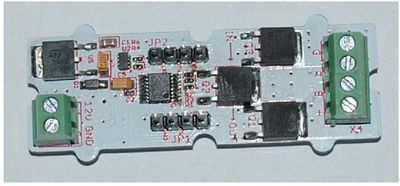Difference between revisions of "LED strip driver"
Katherine.d (talk | contribs) (→Features) |
Katherine.d (talk | contribs) (→Application Ideas) |
||
| Line 29: | Line 29: | ||
== Application Ideas == | == Application Ideas == | ||
| + | *Delightful stage light effect | ||
| − | + | *Indoor light decoration | |
| − | |||
== Cautions == | == Cautions == | ||
Revision as of 05:53, 4 December 2012
Contents
Introduction
The LED Strip Driver with a 4-pin interface provides easy connectivity to your standard Arduino device.
It can help you control the luminance of a single-color LED strip, as well as the color and the luminance of an RGB LED strip through Arduino.
It has 2 terminals and 2 interfaces. The power for LED strip comes in through the 2-pin terminal. And the LED controlling voltages output through the 4-pin terminal. The 2 interfaces are screen-printed “IN” for controlling data input and “OUT” for controlling data shared with the next strip driver, respectively.
It can drive an LED strip 1 to 2 meters long with 9 V, while 1 to 5 meters long with 12 V. The driver in conjunction with the colorful LED strips can add a wonderful effect to indoor or outdoor usages
Features
- compatible interface (3.3V/5V)
- Can be cascaded for a larger display, with each unit having independent outputs
- Best results achieved with LED strips 5 meters long or shorter
- Outputs PWM signals
- 256 gray-levels are adjustable via programming
- Arduino and MEGA compatible
- Screw Terminals (power input and control signal output interface)
Application Ideas
- Delightful stage light effect
- Indoor light decoration
Cautions
Schematic
Specification
Pin definition and Rating
Mechanic Dimensions
Usage
Hardware Installation
Programming
FAQ
Please list your question here:
Support
If you have questions or other better design ideas, you can go to our forum to discuss or creat a ticket for your issue at linksprite support.
Resources
How to buy
See Also
Other related products and resources.
Licensing
This documentation is licensed under the Creative Commons Attribution-ShareAlike License 3.0 Source code and libraries are licensed under GPL/LGPL, see source code files for details.
